Showing Spotlights 73 - 80 of 201 in category All (newest first):
 There is an often-asked question: 'When are we finally going to start seeing nanotechnology products on the market?' As a matter of fact, the average home is already filled with products enhanced or reliant upon nanotechnology. In fact, there are several online repositories listing the more than 2,000 commercially available products that incorporate nanotechnology. The application of nanotechnology in some areas, such as batteries, microelectronics and sunscreens is relatively well known. Let's take a virtual tour through a home to see what else we can find.
There is an often-asked question: 'When are we finally going to start seeing nanotechnology products on the market?' As a matter of fact, the average home is already filled with products enhanced or reliant upon nanotechnology. In fact, there are several online repositories listing the more than 2,000 commercially available products that incorporate nanotechnology. The application of nanotechnology in some areas, such as batteries, microelectronics and sunscreens is relatively well known. Let's take a virtual tour through a home to see what else we can find.
Jul 5th, 2016
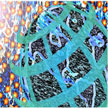 Education has long been recognized as an important factor for growing the fields of nanoscience and nanotechnology and solidifying and expanding their roles in the global economy. Leading researchers from the field discuss innovative learning models that are being applied at the undergraduate level in order to train future leaders at the interface of engineering and management. They have a set of five recommendations to improve the current situation.
Education has long been recognized as an important factor for growing the fields of nanoscience and nanotechnology and solidifying and expanding their roles in the global economy. Leading researchers from the field discuss innovative learning models that are being applied at the undergraduate level in order to train future leaders at the interface of engineering and management. They have a set of five recommendations to improve the current situation.
Jun 21st, 2016
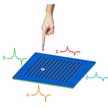 In order to make robots and robotic technology more human-like and more human-friendly, smart skin technology is a critical element that helps robots sense the world. These electronic or smart skins could help machines to accurately perceive the environment and better assist human owners. By applying the triboelectric effect and planar electrostatic induction, researchers for the first time have created a self-powered analogue smart skin.
In order to make robots and robotic technology more human-like and more human-friendly, smart skin technology is a critical element that helps robots sense the world. These electronic or smart skins could help machines to accurately perceive the environment and better assist human owners. By applying the triboelectric effect and planar electrostatic induction, researchers for the first time have created a self-powered analogue smart skin.
Apr 8th, 2016
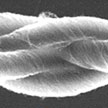 The scaling up of nanomaterials in the broader context of materials science and engineering is the topic of a Perspective article, where the authors construct a roadmap for assembling nanoscale building blocks into bulk nanostructured materials, and define some of the critical challenges and goals. Two-dimenisonal sheets are uniquely well-suited in this roadmap for constructing dense, bulk-sized samples with scalable material performance or interesting emergent properties. But no matter what structures are used, when nanostructures with better-than-bulk material performances are used in bulk form, it is critical that those extraordinary nanoscale properties can be scaled to the macroscopic level.
The scaling up of nanomaterials in the broader context of materials science and engineering is the topic of a Perspective article, where the authors construct a roadmap for assembling nanoscale building blocks into bulk nanostructured materials, and define some of the critical challenges and goals. Two-dimenisonal sheets are uniquely well-suited in this roadmap for constructing dense, bulk-sized samples with scalable material performance or interesting emergent properties. But no matter what structures are used, when nanostructures with better-than-bulk material performances are used in bulk form, it is critical that those extraordinary nanoscale properties can be scaled to the macroscopic level.
Feb 4th, 2016
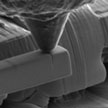 In the past couple of decades, nickel-tungsten (Ni-W) amorphous and nanocrystalline materials have been drawing more and more research interest due to the superior mechanical properties such as high hardness, good mechanical performance, and excellent corrosion resistance. Striving to enhance the mechanical performance of Ni-W thin film alloys, researchers report how the annealing temperature will influence the microstructure evolution and the fracture properties of Ni-W alloys.
In the past couple of decades, nickel-tungsten (Ni-W) amorphous and nanocrystalline materials have been drawing more and more research interest due to the superior mechanical properties such as high hardness, good mechanical performance, and excellent corrosion resistance. Striving to enhance the mechanical performance of Ni-W thin film alloys, researchers report how the annealing temperature will influence the microstructure evolution and the fracture properties of Ni-W alloys.
Jan 8th, 2016
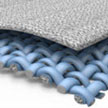 Here are the 10 most popular Nanowerk Nanotechnology Spotlight articles of 2015. This year, the list includes a quick and simple blood test to detect early-stage cancer; self-powered smart suits; nanomaterials for camouflage and stealth applications; nanotechnology energy applications; 3D-printing with graphene; fuzzy and Boolean logic gates based on DNA nanotechnology; a path towards self-powered electronic papers; a look at whether nanomedicine lhas ived up to its promise; smart materials that become 'alive' with living bacteria in supramolecular assemblies; and repair nanobots on damage patrol.
Here are the 10 most popular Nanowerk Nanotechnology Spotlight articles of 2015. This year, the list includes a quick and simple blood test to detect early-stage cancer; self-powered smart suits; nanomaterials for camouflage and stealth applications; nanotechnology energy applications; 3D-printing with graphene; fuzzy and Boolean logic gates based on DNA nanotechnology; a path towards self-powered electronic papers; a look at whether nanomedicine lhas ived up to its promise; smart materials that become 'alive' with living bacteria in supramolecular assemblies; and repair nanobots on damage patrol.
Jan 1st, 2016
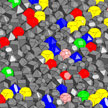 Applying multivariate statistical techniques to the study of nanocarbons, researchers have presented a methodology to identify nanoparticles with unique combinations of features and, in general, a feasible way of in silico characterization of intractable nanomaterial spaces. These analyses are based on structural features characterizing geometry, interatomic distances, bond angle, surface-to-volume ratio, carbon-to-hydrogen ratio, and hybridization fraction; many of which can be preselected without undertaking expensive electronic structure simulations.
Applying multivariate statistical techniques to the study of nanocarbons, researchers have presented a methodology to identify nanoparticles with unique combinations of features and, in general, a feasible way of in silico characterization of intractable nanomaterial spaces. These analyses are based on structural features characterizing geometry, interatomic distances, bond angle, surface-to-volume ratio, carbon-to-hydrogen ratio, and hybridization fraction; many of which can be preselected without undertaking expensive electronic structure simulations.
Nov 30th, 2015
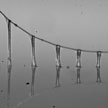 The capture silk used in spider webs consists of axial fiber coated with glue droplets at regular intervals. The spider glue has a unique property that its adhesion is humidity responsive such that for some species the adhesion keeps on increasing up to 100% relative humidity. This is unlike synthetic adhesives that fail under humid conditions. From a polymer science perspective, researchers are interested in understanding the principle behind humidity responsive adhesion of spider glue to create adhesives that work in high humidity conditions.
The capture silk used in spider webs consists of axial fiber coated with glue droplets at regular intervals. The spider glue has a unique property that its adhesion is humidity responsive such that for some species the adhesion keeps on increasing up to 100% relative humidity. This is unlike synthetic adhesives that fail under humid conditions. From a polymer science perspective, researchers are interested in understanding the principle behind humidity responsive adhesion of spider glue to create adhesives that work in high humidity conditions.
Nov 10th, 2015
 There is an often-asked question: 'When are we finally going to start seeing nanotechnology products on the market?' As a matter of fact, the average home is already filled with products enhanced or reliant upon nanotechnology. In fact, there are several online repositories listing the more than 2,000 commercially available products that incorporate nanotechnology. The application of nanotechnology in some areas, such as batteries, microelectronics and sunscreens is relatively well known. Let's take a virtual tour through a home to see what else we can find.
There is an often-asked question: 'When are we finally going to start seeing nanotechnology products on the market?' As a matter of fact, the average home is already filled with products enhanced or reliant upon nanotechnology. In fact, there are several online repositories listing the more than 2,000 commercially available products that incorporate nanotechnology. The application of nanotechnology in some areas, such as batteries, microelectronics and sunscreens is relatively well known. Let's take a virtual tour through a home to see what else we can find.
 Subscribe to our Nanotechnology Spotlight feed
Subscribe to our Nanotechnology Spotlight feed





